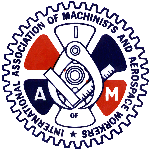O F F I C E R S '
R E P O R T 2004
|
Collective Bargaining — 4 Enforcement Dispute resolution is the key to enforcing our agreements. From the member to the shop steward to the business representative, floor settlements, grievance mediation and/or grievance arbitration must be conducted, documented and moved in a timely fashion so as not to break the chain of representation, and buttress the collective bargaining agreement. Hard work expended during the bargaining process should be followed up by hard work in the enforcement of the agreement. Coordinated Bargaining The IAM continues to participate in establishing coordinated bargaining internally and with other labor organizations. In coordinated bargaining within the IAM itself, the Department endeavors to solicit the absolute sharing of information on collective bargaining agreements, grievances and arbitrations. True success can be measured only when every Local, District and Territory commit to the concept of coordinated bargaining and share willingly in their experiences (both good and bad), as we can only grow stronger for our efforts. Following the discontinuance of the Industrial Union Department of the AFL-CIO, the IAM was instrumental in initiating an alliance with other labor unions affiliated with the Industrial Union Department which will continue to promote coordinated bargaining efforts. A Letter of Commitment was signed by the following international unions outlining a new coordinated bargaining policy and creating an Inter-Union Coordinated Bargaining Committee (I-U CBC) comprised of the following: previous|home|next |

